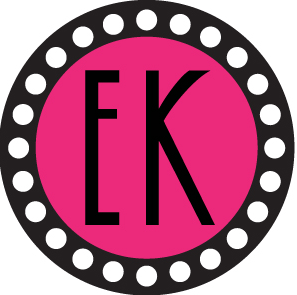The Science of Singing - School incursion
RECOMMENDED FOR YEARS 3-9
We use our voices to communicate everyday but have little knowledge, respect of, or tools, to understand or manipulate this most important instrument that we all possess. Each one is unique in it’s quality. Why? How do our bodies work to produce sound? This science based incursion is presented by a professional performer and vocal pedagogy expert - an opera singer - integrating performance and demonstrative aspects with the science of the voice.
The workings of the voice will be debunked with video footage of the actual vocal chords at work via a laryngoscopy. Respiration will be explained and physically explored ‘hands on. Students will then build their own model of the lungs and model of the larynx as a rotation. They will play vocal games and experience phonation and resonance (the various ways in which we make sound). Learning by doing!
As the last big finale of the incursion we delve into the question - can a human voice really break glass? This fascinating physics experiment allows selected students to have a hands on go at achieving this no mean feat.The presenter’s 'swan song’ will be in fact to break a glass with his/her own voice.
MUSIC
Explore sound and silence and ways of using their voices, movement and instruments to express ideas
Sing and play instruments to create and practise chants, songs and rhymes including those used by cultural groups in the local community
Rehearse and perform songs and short instrumental pieces which they have learnt and composed
Respond to music, expressing what they enjoy and why
DRAMA
Use voice, facial expression, movement and space to imagine and improvise characters and situations
CRITICAL and CREATIVE THINKING
Identify, describe and use different kinds of question stems to gather information and ideas
Make simple modifications to known ideas and routine solutions to generate some different ideas and possibilities
ENGLISH
Know how to use onset and rime to spell words where sounds map more directly onto letters
Blend and segment onset and rime in single syllable spoken words and isolate, blend and segment phonemes in single syllable words (first consonant sound, last consonant sound, middle vowel sound)(VCELA169)
Replicate the rhythms and sound patterns in stories, rhymes, songs and poems from a range of cultures
Listen to and respond orally to texts and to the communication of others in informal and structured classroom situations using interaction skills, including listening, while others speak (VCELY174)
Deliver short oral presentations to peers, using appropriate voice levels, articulation, body language, gestures and eye contact
1 and 2
MUSIC
Use imagination and experimentation to explore musical ideas using voice, movement, instruments and body percussion
Sing and play instruments to improvise, compose and practise a repertoire of chants, songs and rhymes, including those used by cultural groups in the local community
Rehearse and perform songs and instrumental music they have learnt and composed to communicate ideas to an audience
Respond to music, communicating their preferences and discussing where and why people make and perform music
CRITICAL and CREATIVE THINKING
Identify, describe and use different kinds of question stems to gather information and ideas
Make simple modifications to known ideas and routine solutions to generate some different ideas and possibilities
DRAMA
Use voice, facial expression, movement and space to imagine and establish role and situation
3 and 4
MUSIC
Use imagination and creativity to explore pitch, rhythm/time and form, dynamics and tempo using voice, movement and instruments
Use voice and instruments to sing, play and arrange music from different cultures, times and locations, and improvise and compose music in different forms
Rehearse and perform songs and instrumental music they have learnt and composed, shaping elements of music to communicate ideas to an audience
Identify features of the music they listen to, compose and perform, and discuss the purposes it was created for using music terminology
CRITICAL and CREATIVE THINKING
Explore reactions to a given situation or problem and consider the effect of pre-established preferences
Investigate different techniques to sort facts and extend known ideas to generate novel and imaginative ideas
Explore distinctions when organising and sorting information and ideas from a range of sources
Consider concrete and pictorial models to facilitate thinking, including a range of visualisation strategies
Examine an increased range of learning strategies, including visualisation, note-taking, peer instruction and incubation, and reflect on how these can be applied to different tasks to reach a goal
Investigate a range of problem-solving strategies, including brainstorming, identifying, comparing and selecting options, and developing and testing hypotheses
5 and 6
MUSIC
Explore ways of combining the elements of music using listening skills, voice and a range of instruments, objects and electronically generated sounds to create effects
Develop and practise technical skills and use of expressive elements of music in singing, playing instruments, improvising, arranging and composing
Rehearse and perform songs and music they have learnt, including their own compositions, combining aspects of the elements of music and using performance skills, to communicate ideas and intentions to an audience
Explain how aspects of the elements of music are combined to communicate ideas, concepts and feelings by comparing music from different cultures, times and locations
CREATIVE AND CRITICAL THINKING
Examine how different kinds of questions can be used to identify and clarify information, ideas and possibilities
(VCCCTQ021)
Experiment with alternative ideas and actions by setting preconceptions to one side
(VCCCTQ022)
Identify and form links and patterns from multiple information sources to generate non-routine ideas and possibilities
(VCCCTQ023)
Investigate common reasoning errors including contradiction and inconsistency, and the influence of context
(VCCCTR024)
Consider the importance of giving reasons and evidence and how the strength of these can be evaluated
(VCCCTR025)
Consider when analogies might be used in expressing a point of view and how they should be expressed and evaluated
(VCCCTR026)
Investigate thinking processes using visual models and language strategies
(VCCCTM029)



